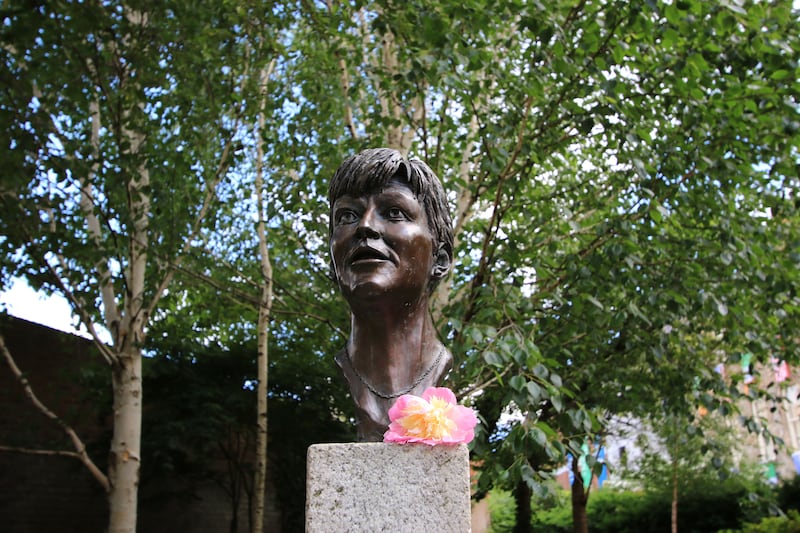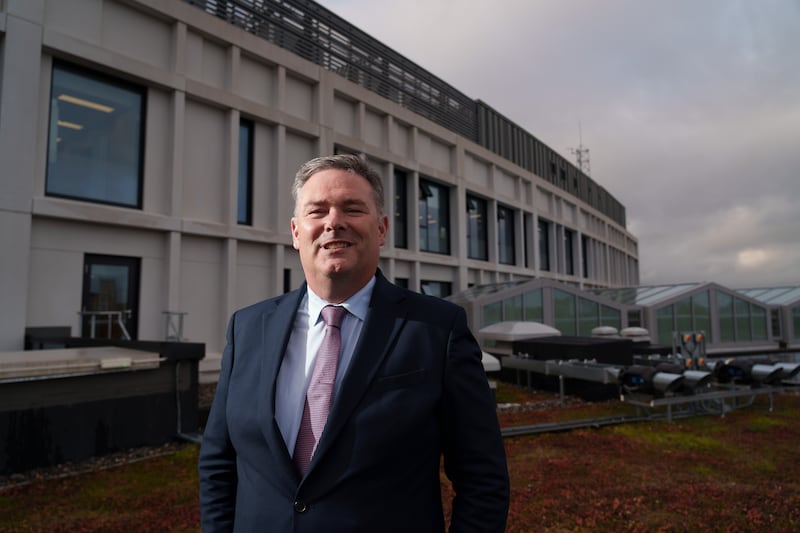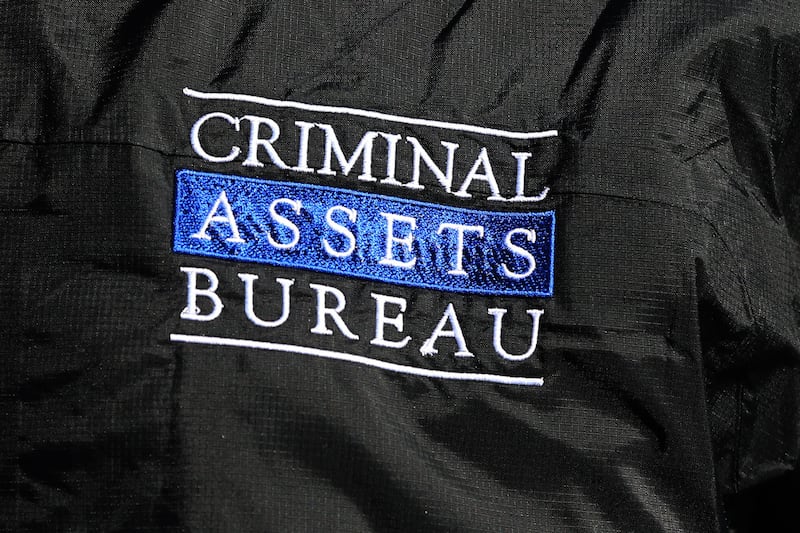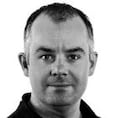As head of the Criminal Assets Bureau (Cab), Det Chief Supt Michael Gubbins has a unique view of the ever-changing world of Irish organised crime. He witnesses the rise and fall of gang leaders and the constant scheming around making money, concealing it, laundering it and getting it out of the country. Gubbins and his staff of almost 100 people are responsible for identifying the proceeds of crime, including from the drugs trade, and confiscating them: “deprive and deny”, he says of the bureau’s mission statement.
Created in the wake of the murder of journalist Veronica Guerin in 1996, the bureau is busier than ever; a reflection of an insatiable demand for drugs in a full-employment economy.

It returned €6.4 million to the exchequer last year made up of confiscated cash and assets – houses, clothes, watches, cars, designer goods – seized and sold. Some €3.2 million in taxes were recovered last year, while 15 targets paid €2 million to settle outstanding Cab-related Revenue demands.
The criminals, and their partners, are increasingly spending money on their appearance: sunbed sessions, extensive dental work and collagen implants are now very common among the criminal fraternity
Aside from Cab’s core staff – Garda members, Revenue officers and Department of Social Protection personnel – the bureau has also trained 545 gardaí to be “assets profilers”. Based across the Garda force nationwide, they are charged with identifying the signs that people in their communities are living beyond their means as a result of crime. They compile profiles of potential Cab targets, which are submitted to the Dublin-based bureau, often resulting in the targets’ assets being investigated.
READ MORE

Gubbins says the “signs” of wealth are changing, and are now influenced by Instagram and reality television shows, including Love Island. The criminals, and their partners, are increasingly spending money on their appearance: sunbed sessions, extensive dental work and collagen implants are now very common among the criminal fraternity.
“The desire for wealth is different now,” Gubbins says of the current generation of criminals, especially in the drugs trade. “You only have to go back to the old photographs of criminals even, say, 15 years ago ... The types of people who were involved in drugs, they were raggy enough characters, they didn’t dress particularly well. But your average drug dealer now has the white teeth, his hair is groomed, he’s got a tan. So you’ve seen a huge transition in the general appearance of these kinds of people and what they aspire to.
“That’s brand new and it’s widespread. It’s all-pervasive. That would never have been there before, it would have been seen as a weakness [in gangland] if you were vain. But we can’t forget that, as well as being criminals, these guys are now of an age where Instagram is a big influence. And they’ve taken to it with gusto. It’s also an expression of wealth. All of these [cosmetic] procedures cost money. There’s no room for subtlety in this [criminal] world and anything that says ‘look at me, I’m successful’... they go for it.”
He believes Instagram culture – which can involve taking photographs to share and project a particular lifestyle – has also driven other spending habits in the underworld. This includes very expensive clothing and the need to be seen at major international sporting fixtures and to take expensive holidays, often in big groups, several times per year.
Gubbins says the creation of Cab has forced many “high roller” Irish criminals to move abroad “because they simply cannot have the lifestyle in Ireland they aspire to”. He lists Liam Byrne, Thomas “Bomber” Kavanagh and the Kinahans as examples. Byrne was the leader of the Dublin-based Byrne organised crime group that handled most of the Kinahans’ drugs in Ireland. Kavanagh, who was first targeted by Cab in the 1990s, has been based in the UK, leading the cartel’s British drugs enterprise.
Gubbins says that when the leaders of even medium-sized Irish gangs relocate abroad in response to being targeted by the bureau, it weakens the control they have over their crime group. Those just below them in the pecking order see the absence of their leader as an opportunity for self-promotion, which often results in disarray.
However, Gubbins adds he is equally as concerned with the impact of organised crime on local communities. When Cab appears at a known drug dealer’s home to search it, the local community sees that and the operations are covered by the media.
[ Liam Byrne fighting extradition on basis UK prison is ‘inhumane and degrading’Opens in new window ]
The bureau, he says, always sees an uptick in “good citizens reports” in the days after a high-profile operation. These are anonymous letters sent to Cab by members of the public tipping them off about criminals in their community who should be investigated.
“If someone is bad, their local community knows it and they know what they’re up to,” says Gubbins. “And the beauty of the good citizen reports we get is that they’re anonymous, nobody has to make a statement or go to court. There’s information in them, and we will follow that up.” These criminals have “disrupted the lives of their neighbours through drugs, intimidation and violence”.
As a result, when searches are under way, people passing – “some of them walking their dogs” – will often murmur at the gardaí under their breath; “‘thanks lads, about time’ but in a supportive way”, he says. Others driving past the scene will “beep their horns”, which is interpreted as a sign of support.
Liam Byrne and his associates are cited as a particular example of the way groups of criminals can dominate a community. Gubbins points out when Byrne was targeted by Cab and his home on Raleigh Square, Crumlin, confiscated, it broke the stranglehold that he and his group, had on the area. The Byrne group “had effectively taken control” of a patch at junction of Windmill Road, Kildare Road and Raleigh Square.
“Anyone driving through that area would have seen all the flashy cars, the houses with the big extensions and other work done. It was very much in people’s faces,” he says. “For ordinary people living in that area, going out to work trying to pay their mortgages... to have this on your doorstep, it’s galling. The fact those assets, the houses and the cars, were ultimately taken away has a positive impact on the local community.”
Aside from funding the purchase of assets and an Instagrammable lifestyle, Gubbins also says the proceeds of crime can be used to generate fear. One change he has noticed over the last 10 to 15 years is that “everything has a price now”.
In previous generations, leading criminals would have generally been feared locally because of their ability to mete out violence. They often managed a large network of people and, for payment, could outsource violence to them.
Many of the men, sometimes boys, willing to engage in violence for payment used that money on their own, “lower-rent” version of an Instagrammable lifestyle – very expensive trainers and jackets. These were now an important status symbol, especially in socially deprived neighbourhoods.
Because the proceeds of crime could generate that violence-based power, Gubbins says the bureau’s mission to “deprive and deny” is perhaps more relevant than ever.
They’re probably still living in the neighbourhood where they grew up. Many of them rarely venture outside of that. They’ve got these big, ostentatious extensions and they’ve put so much money into their houses that they’re never going to get back
— Det Chief Supt Michael Gubbins
“Having this money is power in their community, so they are somewhat vulnerable once we take that off them. They’ve lost standing in their local community and in the profession they’ve chosen to pursue. And the spotlight is now on them.”
Though so many of the bureau’s cases down the years have been based on the seizure of property, Gubbins says the criminal fraternity still seeks to invest in houses, apartments and land.
“They’re probably still living in the neighbourhood where they grew up. Many of them rarely venture outside of that. They’ve got these big, ostentatious extensions and they’ve put so much money into their houses that they’re never going to get back. And they do that because they’re in their own territory where they feel safe. And they have to have the trophy house.”
He says it’s not unusual for the houses Cab targets to have walk-in wardrobes. In one case, they found “floor-to-ceiling shelves all filled with pairs of shoes” for the man they were pursuing. When they targeted another man, though he did not drink alcohol, he had built a cellar with a collection of fine wines. “The best Amarone, the best Chianti,” Gubbins recalls.

However, he adds when criminals “get used to the good life” their downfall is harder, and is often something they cannot recover from. He cites Thomas “Bomber” Kavanagh as a case in point. Now aged 55, when Dubliner Kavanagh lost his house to in Drimnagh to Cab in 1999 he soon went to Britain and started again. He built considerable wealth as one of the most senior figures in the Kinahan cartel.
We’d never want to over-glamorise the lifestyle; the handbags, the shoes, the watches, the cars. Because behind each of them there’s addiction, there’s violence, intimidation and organised crime all the way up to murder
— Det Chief Supt Michael Gubbins
However, Kavanagh was sentenced to 21 years in Britain last year for smuggling the cartel’s drugs. He has also been the target of another Cab operation – alongside Daniel Kinahan and businessman Jim Mansfield jnr – over the seizure of a house at Coldwater Lakes, Saggart, which fetched €2 million during the Celtic Tiger years. Kavanagh is also facing an assets seizure action in the UK for any wealth there.
Gubbins says criminals such as Kavanagh, had been “high rollers” for so long that they had been “softened by the lifestyle”. As a result, they would find it much harder to do prison time and to recover after losing assets, compared with when they were younger.
It is crucial to weaken “up-and-coming” criminals but also target the older generation for a second time, if required. It is imperative that their peer group and the communities they were from get a “ringside seat” for their downfall, when the full, often squalid and violent, facts emerge to strip away any aura around them.
“We’d never want to over-glamorise the lifestyle; the handbags, the shoes, the watches, the cars. Because behind each of them there’s addiction, there’s violence, intimidation and organised crime all the way up to murder. All of those things facilitate our targets having their lifestyles.”





















